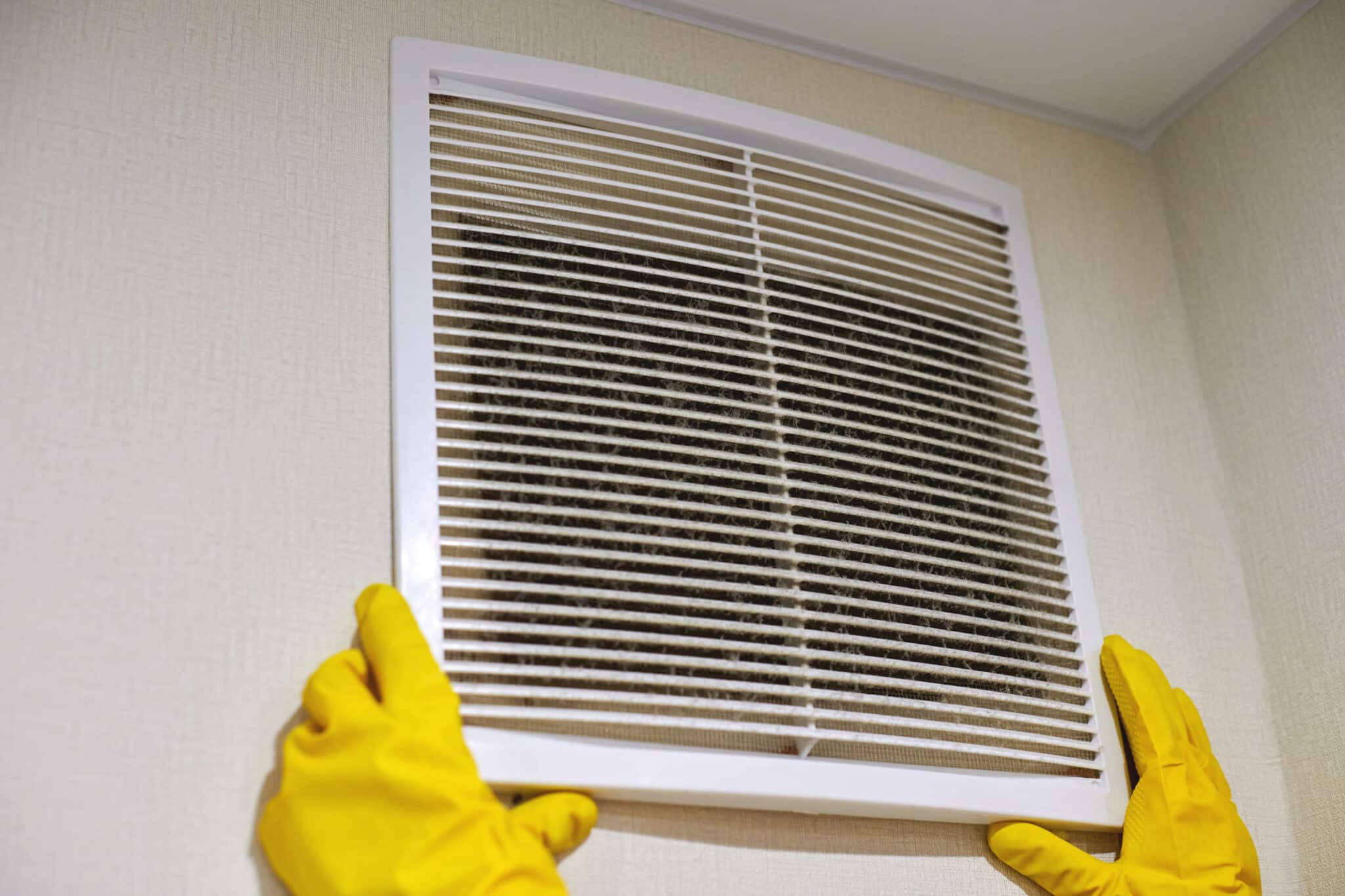
Energy-Efficient HVAC for Converted Historic Fort Worth Buildings
Fort Worth’s historic buildings blend history with charm, yet their outdated HVAC systems struggle to meet today’s efficiency standards. Modernizing these systems with energy-efficient HVAC solutions offers a unique opportunity to preserve heritage while embracing sustainability. Retrofitting historic buildings reduces energy waste, enhances indoor comfort, and lowers utility costs—all without compromising architectural integrity.
Although challenges like structural constraints and preservation rules exist, innovative HVAC technology provides solutions tailored to historic spaces. These upgrades not only extend the life of Fort Worth’s treasured landmarks but also ensure they remain relevant and functional in a modern, energy-conscious world.
The Unique Needs of Historic Buildings in Fort Worth
Historic buildings in Fort Worth are more than structures—they are living reminders of the city’s storied past. Preserving their charm while meeting modern energy demands is a delicate balancing act. Unlike contemporary properties, these landmarks were constructed long before energy efficiency became a concern, leading to challenges like poor insulation, drafty original windows, and towering ceilings that make climate control inefficient.
Upgrading HVAC systems in these buildings requires an innovative approach. Energy-efficient HVAC solutions must seamlessly integrate with the architecture, often using discreet designs that preserve the aesthetic integrity of the space. Compact systems or ductless options are frequently employed to ensure comfort without compromising the building’s historical character. These solutions not only enhance efficiency but also respect the craftsmanship and materials that define these structures.
The materials in historic buildings, such as thick stone walls or original woodwork, can significantly influence heating and cooling performance. These unique features demand careful calibration of HVAC systems to achieve optimal results. Additionally, preservation regulations often limit intrusive modifications, requiring customized solutions that work within strict guidelines.
By addressing these unique needs with energy-efficient HVAC systems, property owners can reduce energy costs, improve indoor comfort, and safeguard Fort Worth’s architectural legacy for future generations. Modernizing historic buildings is not just about upgrades—it is about honoring history while embracing sustainability.
The Importance of Energy Efficiency in HVAC Systems
Energy efficiency is no longer just about cutting costs—it is about creating sustainable, functional spaces that meet the demands of the modern world. In Fort Worth, where climate extremes test the limits of traditional HVAC systems, energy-efficient solutions have become a necessity. For property owners, particularly those overseeing historic buildings, upgrading to energy-efficient HVAC systems delivers unparalleled benefits.
Older HVAC systems in historic buildings are often inefficient and costly to operate, wasting energy while struggling to maintain consistent temperatures. Energy-efficient HVAC systems, however, are specifically designed to overcome these challenges. They optimize heating and cooling processes, ensuring comfort while significantly reducing energy consumption. For owners of Fort Worth’s historic landmarks, this means maintaining the integrity of cherished buildings while meeting today’s efficiency standards.
The benefits extend beyond financial savings. Energy-efficient HVAC systems are better for the environment, cutting greenhouse gas emissions and supporting sustainability goals. This is critical for cities like Fort Worth, where energy demands are high, and every effort toward conservation counts. These systems also enhance indoor air quality, improving health and comfort for occupants—whether in homes, businesses, or public spaces.
Investing in energy-efficient HVAC systems is a forward-thinking decision that benefits both the present and the future. For historic buildings, it is the key to preserving their timeless appeal while ensuring they remain viable, comfortable, and environmentally responsible. With these systems in place, Fort Worth’s property owners can embrace innovation and sustainability without compromising history.
Challenges of Retrofitting Historic Buildings
Retrofitting historic buildings with energy-efficient HVAC systems is a complex but vital undertaking. These buildings are more than just structures; they are symbols of history and culture. Ensuring their longevity while meeting modern energy needs requires creativity, precision, and expertise. While the benefits of modernization are immense, the challenges involved demand a clear understanding of the obstacles and their solutions.
Strict Preservation Guidelines
Preservation laws in Fort Worth and beyond often prioritize the aesthetic and structural integrity of historic buildings, limiting the extent of modifications. These restrictions make standard HVAC installations impractical. Innovative solutions, such as concealed ductwork or mini-split systems, are essential for achieving energy efficiency while respecting the building’s historical character.
Space and Structural Constraints
Historic buildings were not designed to accommodate modern mechanical systems. Limited space for equipment, unusual layouts, and the use of thick masonry walls or hand-crafted materials complicate retrofits. Customized designs, like compact or modular HVAC units, are crucial to overcoming these limitations without compromising performance.
Preserving Fragile Materials
Materials like antique woodwork, intricate plaster, and vintage stonework add unique charm to historic buildings but are delicate and easily damaged. Retrofitting requires meticulous care to integrate energy-efficient HVAC systems without harming these irreplaceable elements.
Inefficiency of Existing Architecture
Older windows, insufficient insulation, and high ceilings common in historic buildings hinder energy efficiency. Addressing these inefficiencies through complementary upgrades, such as window films or insulation enhancements, can maximize the effectiveness of modern HVAC systems.
Costs and Expertise
Retrofitting requires specialized knowledge and often involves higher upfront costs compared to standard HVAC installations. However, the long-term benefits—such as reduced energy bills, improved comfort, and the preservation of Fort Worth’s architectural treasures—make the investment worthwhile.
By overcoming these challenges with tailored solutions and expert execution, property owners can bridge the gap between the past and the present. Energy-efficient HVAC systems not only improve the functionality and sustainability of historic buildings but also ensure they remain an integral part of Fort Worth’s legacy for generations to come.

Innovative HVAC Solutions for Historic Structures
Retrofitting historic buildings with energy-efficient HVAC systems requires balancing modern technology with the preservation of architectural integrity. Fort Worth’s historic landmarks, with their intricate designs and cultural significance, demand innovative solutions to meet contemporary energy standards without compromising their charm. Thanks to advancements in HVAC technology, property owners now have access to a range of effective options tailored to the unique needs of these structures.
Geothermal HVAC Systems
Geothermal systems are revolutionizing the way historic buildings manage energy. These systems use underground temperatures to deliver efficient heating and cooling while remaining virtually invisible from the surface. By installing geothermal loops underground, property owners can achieve unparalleled energy efficiency without disrupting the building’s historical appearance.
Variable Refrigerant Flow (VRF) Systems
VRF systems offer flexible and efficient climate control tailored to the unique layouts of historic buildings. They allow precise temperature adjustments for different zones, accommodating the varied spaces found in older structures. VRF systems are compact, require minimal structural modifications, and are among the most energy-efficient HVAC technologies available today.
Ductless Mini-Splits
Ductless systems are ideal for historic buildings where traditional ductwork would damage the structure. Compact and easy to install, they provide localized temperature control, enhancing energy-efficient HVAC performance and comfort without altering the building’s architecture. These systems are especially beneficial for maintaining the aesthetics of historically significant interiors.
Smart HVAC Technology
Smart HVAC systems incorporate cutting-edge controls to optimize energy efficiency. With programmable thermostats, AI-powered analytics, and remote monitoring, these systems adapt to the specific needs of a historic building. They help preserve materials by maintaining consistent temperature and humidity levels, ensuring that the building remains comfortable and protected.
Energy Recovery Ventilators (ERVs)
ERVs improve indoor air quality while conserving energy by recycling heat or coolness from outgoing air. They are particularly valuable in historic buildings, where fresh air circulation can be challenging to achieve without modern ventilation systems. ERVs operate discreetly, making them a preferred choice for preserving both comfort and historical integrity.
These innovative energy-efficient HVAC solutions not only ensure sustainability but also respect the legacy of historic structures. By integrating these advanced systems, property owners in Fort Worth can preserve the city’s architectural treasures while creating sustainable, comfortable environments for future generations.
Proven Strategies for Retrofitting Historic Buildings
Successfully retrofitting historic buildings with energy-efficient HVAC systems demands strategies that preserve their architectural significance while addressing modern energy challenges. Fort Worth, known for its rich history, offers countless examples of how innovative approaches can blend preservation with modernization.
Tailored HVAC Solutions
Customizing HVAC systems to fit the unique features of historic buildings is crucial. Energy-efficient HVAC options like ductless mini-splits or compact VRF systems allow for minimal structural disruption while optimizing energy use. These tailored systems ensure that the building retains its character while benefiting from modern efficiency.
Non-Invasive Installations
Retrofitting historic buildings often involves finding ways to integrate systems without altering their iconic designs. Concealed ductwork, under-floor heating, or wall-mounted units can deliver efficient climate control without compromising the building’s original aesthetic. Non-invasive solutions maintain historical integrity while meeting modern demands.
Supporting Upgrades for Efficiency
Beyond the HVAC system itself, supplementary upgrades—such as improved insulation, weatherstripping, or low-profile window films—enhance energy efficiency. These adjustments optimize the performance of energy-efficient HVAC systems by reducing energy loss, especially in structures with outdated windows or high ceilings.
Geothermal and Smart Technologies
Advanced HVAC technologies like geothermal heat pumps and smart HVAC systems bring exceptional energy savings to historic retrofits. Geothermal systems offer discreet installation with underground components, while smart thermostats and sensors provide precise control to maintain consistent indoor climates and protect fragile materials.
Expert Collaboration
Partnering with professionals experienced in historic preservation and energy-efficient HVAC installations is essential. These experts understand how to navigate regulatory requirements while implementing cutting-edge solutions tailored to the structure’s needs, ensuring compliance and performance.
By applying these proven strategies, property owners can modernize historic buildings without sacrificing their cultural value. Energy-efficient HVAC systems paired with thoughtful retrofitting ensure Fort Worth’s landmarks remain sustainable, comfortable, and true to their legacy.
Best Practices for Implementing Energy-Efficient HVAC Systems
Upgrading to energy-efficient HVAC systems is a smart investment for any building, offering reduced energy costs, improved comfort, and a lower environmental footprint. For Fort Worth property owners, especially those with historic buildings, implementing these systems requires careful planning and proven strategies to maximize benefits while preserving architectural integrity.
Conduct a Detailed Energy Assessment
Every successful HVAC upgrade begins with a thorough energy audit. This assessment identifies inefficiencies in the building, such as poor insulation, air leaks, or outdated equipment, and highlights areas for improvement. Understanding these gaps ensures the chosen energy-efficient HVAC system is tailored to the building’s unique needs, resulting in optimal performance.
Select the Right Technology
Choosing the right system is critical. Options like geothermal heat pumps, VRF systems, or ductless mini-splits deliver high efficiency with minimal energy use. Each option can be customized to fit the building’s layout, size, and specific challenges, ensuring compatibility and long-term effectiveness.
Preserve Integrity with Low-Impact Installations
For historic or architecturally significant buildings, preserving aesthetics is a top priority. Non-invasive installation methods, such as concealed ductwork or compact systems, integrate seamlessly without compromising the building’s character. These approaches allow property owners to enjoy modern energy-efficient HVAC benefits while respecting the past.
Enhance Efficiency with Supporting Upgrades
Pairing HVAC improvements with other energy-saving measures amplifies results. Upgrading insulation, sealing windows, or installing energy-efficient films reduces energy loss, helping HVAC systems work more efficiently and delivering greater overall savings.
Adopt Smart HVAC Systems
Smart HVAC technologies, equipped with programmable thermostats and AI-driven sensors, optimize energy use by adapting to occupancy patterns and environmental conditions. These systems enhance efficiency and provide precise control, ensuring consistent indoor comfort without unnecessary energy consumption.
Prioritize Maintenance and Monitoring
Even the best energy-efficient HVAC systems require routine upkeep to maintain peak performance. Regular maintenance, including filter cleaning and system checks, prevents wear and ensures efficiency over the long term. Proactive monitoring can also identify issues early, minimizing repair costs.
Adopting these best practices enables property owners to unlock the full potential of energy-efficient HVAC systems. These strategies effectively reduce costs, enhance indoor comfort, and align with Fort Worth’s ongoing dedication to sustainability and preservation. For historic buildings, they strike the ideal balance between modern innovation and a profound respect for architectural heritage.

Seasonal Considerations for December
December in Fort Worth and Haltom City ushers in cooler weather, making it essential to prioritize heating efficiency while maintaining indoor comfort. Optimizing energy-efficient HVAC systems during this time not only reduces energy costs but also ensures consistent performance throughout the winter months.
-
Prepare Your HVAC System
Before temperatures drop further, schedule a professional inspection of your HVAC system. Routine maintenance, including cleaning filters, checking heat exchangers, and sealing duct leaks, ensures the system operates efficiently. A well-maintained energy-efficient HVAC system can handle colder conditions with less strain and energy waste.
-
Maximize Thermostat Efficiency
Adjust your thermostat settings to balance comfort and energy savings. Aim for 68°F when the building is occupied and lower settings during unoccupied periods. Smart thermostats offer additional benefits by automatically optimizing heating schedules based on your usage patterns, further enhancing efficiency.
-
Seal and Insulate
Cold air often finds its way into buildings through gaps in windows, doors, and vents. Sealing these leaks with weatherstripping or caulking reduces heat loss while adding insulation to walls, attics, and basements minimizes the workload on your HVAC system. These measures improve overall efficiency and comfort.
-
Enhance Airflow and Ventilation
Proper airflow is crucial during the winter months. Keep vents and registers clear of obstructions to ensure even heat distribution. For older buildings, energy recovery ventilators (ERVs) are excellent additions to energy-efficient HVAC systems, improving indoor air quality while retaining heat.
-
Utilize Zoned Heating
Zoning systems allow precise heating in specific areas, reducing energy consumption in unused spaces. This strategy is particularly effective for larger buildings or historic structures, where varying layouts can complicate temperature regulation.
By implementing these practices, Fort Worth and Haltom City residents can enjoy a comfortable, cost-effective winter. Optimizing energy-efficient HVAC systems for the season not only reduces energy costs but also contributes to environmental sustainability, making these adjustments both practical and responsible.
Contact Us Today
Looking to save on energy costs while maximizing comfort? One Hour Air Conditioning & Heating of Fort Worth specializes in energy-efficient HVAC solutions designed for your unique needs. Whether upgrading an older system or modernizing a historic property, our expert team delivers cutting-edge technology and tailored service to transform your space. We are committed to helping you lower utility bills, improve air quality, and enjoy year-round reliability. Do not let inefficiency keep you from the comfort you deserve—contact One Hour Air Conditioning & Heating of Fort Worth today and experience the benefits of energy efficiency done right.
FAQs: Energy-Efficient HVAC Systems in Historic Buildings
-
What makes an HVAC system energy-efficient?
Energy-efficient HVAC systems optimize heating and cooling by using advanced technology to minimize energy consumption while maintaining consistent indoor comfort.
-
Can energy-efficient HVAC systems be installed in historic buildings without altering their character?
Yes, systems like ductless mini-splits and geothermal units are designed for minimal invasiveness, preserving the building’s original features and charm.
-
What are the benefits of upgrading to energy-efficient HVAC systems in historic buildings?
Benefits include reduced energy bills, improved air quality, consistent indoor comfort, and the preservation of the building’s structural integrity.
-
What challenges might I face when retrofitting historic buildings with modern HVAC systems?
Challenges include space constraints, strict preservation guidelines, and fragile materials. Customized solutions address these issues while ensuring energy efficiency.
-
What types of HVAC systems work best in historic buildings?
Geothermal systems, VRF technology, and ductless mini-splits are excellent options, as they offer flexibility and efficiency without requiring extensive modifications.


